
Citizen Development: Empowering the Everyday Innovator
Last updated: October 17, 2024 Read in fullscreen view
- 25 Nov 2025
 How AI Agents Are Redefining Enterprise Automation and Decision-Making 27/42
How AI Agents Are Redefining Enterprise Automation and Decision-Making 27/42 - 01 May 2023
 Understanding Business as Usual (BAU) and How to Transition 22/843
Understanding Business as Usual (BAU) and How to Transition 22/843 - 05 Oct 2025
 The New Facebook Algorithm: A Paradigm Shift in Content Discovery 19/46
The New Facebook Algorithm: A Paradigm Shift in Content Discovery 19/46 - 01 Jul 2025
 The Hidden Costs of Not Adopting AI Agents: Risk of Falling Behind 17/108
The Hidden Costs of Not Adopting AI Agents: Risk of Falling Behind 17/108 - 07 Nov 2025
 Online vs. Offline Machine Learning Courses in South Africa: Which One Should You Pick? 16/30
Online vs. Offline Machine Learning Courses in South Africa: Which One Should You Pick? 16/30 - 21 Nov 2025
 The Rise of AgentOps: How Enterprises Are Managing and Scaling AI Agents 12/43
The Rise of AgentOps: How Enterprises Are Managing and Scaling AI Agents 12/43 - 03 Nov 2023
 Why Is Billable Viable Product An Alternative To Minimum Viable Product? 12/165
Why Is Billable Viable Product An Alternative To Minimum Viable Product? 12/165 - 06 Nov 2025
 Top 10 AI Development Companies in the USA to Watch in 2026 10/36
Top 10 AI Development Companies in the USA to Watch in 2026 10/36 - 18 Jul 2024
 The 8 Best ways to Innovate your SAAS Business Model in 2024 8/205
The 8 Best ways to Innovate your SAAS Business Model in 2024 8/205 - 30 Jul 2024
 The Future of IT Consulting: Trends and Opportunities 8/131
The Future of IT Consulting: Trends and Opportunities 8/131 - 02 Oct 2022
 The Real Factors Behind Bill Gates’ Success: Luck, Skills, or Connections? 8/300
The Real Factors Behind Bill Gates’ Success: Luck, Skills, or Connections? 8/300 - 29 Nov 2021
 Memorandum of Understanding (MOU) for Partnership Agreements 7/470
Memorandum of Understanding (MOU) for Partnership Agreements 7/470 - 27 Jul 2024
 Positive Psychology in the Digital Age: Future Directions and Technologies 6/337
Positive Psychology in the Digital Age: Future Directions and Technologies 6/337 - 05 Aug 2024
 Revisiting the Mistake That Halted Japan's Software Surge 6/322
Revisiting the Mistake That Halted Japan's Software Surge 6/322 - 14 Aug 2024
 From Steel to Software: The Reluctant Evolution of Japan's Tech Corporates 6/488
From Steel to Software: The Reluctant Evolution of Japan's Tech Corporates 6/488 - 11 Oct 2022
 Why choose Billable Viable Product (BVP) over Minimum Viable Product (MVP) 5/315
Why choose Billable Viable Product (BVP) over Minimum Viable Product (MVP) 5/315 - 24 Dec 2024
 Artificial Intelligence and Cybersecurity: Building Trust in EFL Tutoring 5/144
Artificial Intelligence and Cybersecurity: Building Trust in EFL Tutoring 5/144 - 28 Nov 2025
 How AI Will Transform Vendor Onboarding and Seller Management in 2026 4/21
How AI Will Transform Vendor Onboarding and Seller Management in 2026 4/21 - 27 Feb 2025
 How AI Agents are Changing Software Development? 3/170
How AI Agents are Changing Software Development? 3/170 - 09 Oct 2024
 Short-Form Video Advertising: The Secret to Captivating Your Audience 3/107
Short-Form Video Advertising: The Secret to Captivating Your Audience 3/107 - 06 Dec 2024
 Steps For Integrating Sustainable Practices Into Business Operations 3/114
Steps For Integrating Sustainable Practices Into Business Operations 3/114 - 03 May 2024
 The Iceberg of Ignorance 3/336
The Iceberg of Ignorance 3/336 - 09 Jul 2024
 What Is Artificial Intelligence and How Is It Used Today? 3/216
What Is Artificial Intelligence and How Is It Used Today? 3/216 - 20 Dec 2021
 What is Hybrid Mobile App Development? 3/313
What is Hybrid Mobile App Development? 3/313 - 21 Dec 2023
 Top 12 Low-Code Platforms To Use in 2024 2/1149
Top 12 Low-Code Platforms To Use in 2024 2/1149 - 31 Dec 2022
 The New Normal for Software Development 2/343
The New Normal for Software Development 2/343 - 17 Jun 2021
 What is IT-business alignment? 2/343
What is IT-business alignment? 2/343 - 07 Nov 2022
 Why Design Thinking can save the outsourcing industry 2/168
Why Design Thinking can save the outsourcing industry 2/168 - 04 Oct 2023
 The Future of Work: Harnessing AI Solutions for Business Growth 2/258
The Future of Work: Harnessing AI Solutions for Business Growth 2/258 - 10 Sep 2024
 Leading Remote Teams in Hybrid Work Environments 2/125
Leading Remote Teams in Hybrid Work Environments 2/125 - 21 Aug 2024
 What is Singularity and Its Impact on Businesses? 2/324
What is Singularity and Its Impact on Businesses? 2/324 - 18 Aug 2024
 The Future of Web Development: Emerging Trends and Technologies Every Developer Should Know 2/175
The Future of Web Development: Emerging Trends and Technologies Every Developer Should Know 2/175 - 22 Nov 2024
 The Role of AI in Enhancing Business Efficiency and Decision-Making 2/155
The Role of AI in Enhancing Business Efficiency and Decision-Making 2/155 - 21 Apr 2025
 Agent AI in Multimodal Interaction: Transforming Human-Computer Engagement 2/148
Agent AI in Multimodal Interaction: Transforming Human-Computer Engagement 2/148 - 25 Jan 2025
 The Decline of Traditional SaaS and the Rise of AI-first Applications 2/73
The Decline of Traditional SaaS and the Rise of AI-first Applications 2/73 - 05 Jun 2025
 How AI-Driven Computer Vision Is Changing the Face of Retail Analytics 2/77
How AI-Driven Computer Vision Is Changing the Face of Retail Analytics 2/77 - 17 Oct 2025
 MLOps vs AIOps: What’s the Difference and Why It Matters 2/67
MLOps vs AIOps: What’s the Difference and Why It Matters 2/67 - 24 Oct 2025
 AI Agents in SaaS Platforms: Automating User Support and Onboarding 1/52
AI Agents in SaaS Platforms: Automating User Support and Onboarding 1/52 - 20 Aug 2025
 What Is Agentic AI? The Next Phase of Artificial Intelligence 1/96
What Is Agentic AI? The Next Phase of Artificial Intelligence 1/96 - 20 Feb 2025
 How Machine Learning is Shaping the Future of Digital Advertising 1/76
How Machine Learning is Shaping the Future of Digital Advertising 1/76 - 06 May 2025
 How Machine Learning Is Transforming Data Analytics Workflows 1/148
How Machine Learning Is Transforming Data Analytics Workflows 1/148 - 02 Dec 2024
 The Intersection of AI and Business Analytics: Key Concepts to Master in Your Business Analytics Course 1/253
The Intersection of AI and Business Analytics: Key Concepts to Master in Your Business Analytics Course 1/253 - 28 Oct 2025
 The Future of Real Estate: Key Trends and Essential Lessons in Digital Transformation 1/10
The Future of Real Estate: Key Trends and Essential Lessons in Digital Transformation 1/10 - 05 Aug 2024
 Affordable Tech: How Chatbots Enhance Value in Healthcare Software 1/142
Affordable Tech: How Chatbots Enhance Value in Healthcare Software 1/142 - 29 Oct 2024
 Top AI Tools and Frameworks You’ll Master in an Artificial Intelligence Course 1/328
Top AI Tools and Frameworks You’ll Master in an Artificial Intelligence Course 1/328 - 03 Jan 2024
 Why Partnership is important for Growth? 1/145
Why Partnership is important for Growth? 1/145 - 31 Dec 2022
 Future of Software Development Trends and Predictions for 2023 1/120
Future of Software Development Trends and Predictions for 2023 1/120 - 16 Aug 2022
 What is a Headless CMS? 1/225
What is a Headless CMS? 1/225 - 16 Sep 2022
 Examples Of Augmented Intelligence In Today’s Workplaces Shaping the Business as Usual 1/394
Examples Of Augmented Intelligence In Today’s Workplaces Shaping the Business as Usual 1/394 - 31 Dec 2023
 Software Development Outsourcing Trends to Watch Out for in 2024 /160
Software Development Outsourcing Trends to Watch Out for in 2024 /160 - 18 Jan 2024
 Self-healing code is the future of software development /200
Self-healing code is the future of software development /200 - 19 Dec 2023
 How AI is Transforming Software Development? /275
How AI is Transforming Software Development? /275 - 15 Apr 2024
 Weights & Biases: The AI Developer Platform /170
Weights & Biases: The AI Developer Platform /170 - 05 Oct 2021
 Shiny Object Syndrome: Why Your Business Isn't "Going Digital" /303
Shiny Object Syndrome: Why Your Business Isn't "Going Digital" /303 - 25 Sep 2024
 Enhancing Decision-Making Skills with an MBA: Data-Driven Approaches for Business Growth /177
Enhancing Decision-Making Skills with an MBA: Data-Driven Approaches for Business Growth /177 - 10 Sep 2024
 AI in Email Marketing: Personalization and Automation /154
AI in Email Marketing: Personalization and Automation /154 - 10 Nov 2025
 Multi-Modal AI Agents: Merging Voice, Text, and Vision for Better CX /33
Multi-Modal AI Agents: Merging Voice, Text, and Vision for Better CX /33 - 27 Aug 2025
 How AI Consulting Is Driving Smarter Diagnostics and Hospital Operations /66
How AI Consulting Is Driving Smarter Diagnostics and Hospital Operations /66 - 15 Aug 2025
 Quantum Technology: Global Challenges and Opportunities for Innovators /56
Quantum Technology: Global Challenges and Opportunities for Innovators /56 - 29 Aug 2025
 How AI Is Transforming Modern Management Science /33
How AI Is Transforming Modern Management Science /33 - 22 Sep 2025
 Why AI Is Critical for Accelerating Drug Discovery in Pharma /53
Why AI Is Critical for Accelerating Drug Discovery in Pharma /53 - 23 Jun 2025
 AI Avatars in the Metaverse: How Digital Beings Are Redefining Identity and Social Interaction /85
AI Avatars in the Metaverse: How Digital Beings Are Redefining Identity and Social Interaction /85
Introduction to Citizen Development
Citizen Development refers to the practice where non-IT professionals, often referred to as "citizen developers," create applications using low-code or no-code platforms. These tools make it possible for employees, regardless of their technical expertise, to develop software solutions that address specific business needs. As organizations strive for digital transformation, Citizen Development is emerging as a way to accelerate innovation and reduce the reliance on overburdened IT departments.
Advantages of Citizen Development
- Increased Innovation: With more people contributing to software development, companies can rapidly create solutions tailored to specific challenges. Employees understand the problems they face firsthand, enabling them to build apps that directly address these issues.
- Faster Time-to-Market: Traditional software development can take months, if not years. Citizen Development shortens the cycle, allowing non-developers to create functioning apps in a fraction of the time.
- Cost Efficiency: Reducing the need for professional developers cuts down on costs, allowing companies to allocate IT resources to more complex projects. Many platforms for Citizen Development are affordable and easy to use, further lowering the financial burden on organizations.
- Democratization of Technology: Citizen Development empowers individuals by giving them the tools and knowledge to create their own apps. This democratization fosters a more innovative and creative workforce.
Disadvantages of Citizen Development
- Quality and Security Concerns: While low-code platforms are designed for ease of use, applications built by citizen developers may lack the robustness and security that professional developers would ensure. Poorly designed apps can become security risks or fail to meet compliance standards.
-
Integration Issues: Not all citizen-developed apps may integrate seamlessly with existing enterprise systems. This can lead to inefficiencies or even conflicts with more complex, professionally developed applications.
- Shadow IT Risks: One major downside of Citizen Development is that it can lead to the proliferation of "shadow IT" — unauthorized apps created without the oversight of the IT department. This can lead to data silos, compatibility issues, and security vulnerabilities.
The Grey Zone Between Citizen Development and Shadow IT
Citizen Development and shadow IT both represent non-IT personnel taking control of technology within an organization, but there is a fine line between the two. While Citizen Development is often sanctioned by the company and happens under the supervision of IT, shadow IT occurs when employees create or use unauthorized apps without the company’s knowledge.
The grey zone lies in situations where citizen developers push boundaries. For example, a well-meaning employee may develop a solution that initially meets business requirements but gradually evolves into a complex system that the IT department never anticipated. Without proper governance, such initiatives could spiral into security breaches or compliance failures.
Cost-Benefit Analysis of Citizen Development
- Costs: The initial cost of implementing low-code platforms is typically low, but ongoing governance and maintenance of apps developed by citizen developers can become an issue. Security, training, and integrating these apps with core systems may also incur hidden costs. Moreover, time spent by employees on app development could detract from their primary responsibilities.
- Benefits: Citizen Development significantly reduces the cost of hiring specialized IT personnel for simple tasks. It empowers businesses to address problems more quickly, while also fostering creativity and autonomy among employees. When done right, it can also improve the speed and efficiency of internal processes.
Ultimately, the benefits of Citizen Development outweigh the costs, provided that the right governance frameworks are in place to manage risk and ensure app quality.
Will Citizen Development Flourish in the Next Five Years?
With the rapid advancement of AI, machine learning, and user-friendly interfaces, Citizen Development is expected to grow significantly in the next five years. The demand for digital transformation, combined with a shortage of skilled developers, makes it increasingly likely that organizations will adopt low-code and no-code platforms. As platforms continue to improve in terms of security and functionality, even individuals with minimal technical skills will be able to create high-quality applications.
However, the future success of Citizen Development hinges on whether companies can establish effective governance structures that prevent the risks associated with shadow IT. Collaboration between IT departments and citizen developers will be key to realizing the full potential of this movement.
Can Everyone Really Become a Developer?
While it is highly optimistic to think that everyone could become a developer, it is more realistic to expect that many individuals will acquire enough digital literacy to solve their own problems using no-code platforms. These tools won’t replace professional developers but will complement their work, allowing citizen developers to focus on simpler, everyday needs, while leaving more complex projects to the experts.
Recommended Books on Citizen Development:
- "Citizen Developer: A Low-Code Manifesto" - A comprehensive guide for non-tech individuals on how to harness low-code development platforms.
- "Low-Code and No-Code Apps for Beginners" - A beginner’s guide to building applications using no-code tools.
- "The No-Code Playbook: Build and Scale Your Startup" - Perfect for aspiring entrepreneurs looking to use no-code to launch their startups.
Conclusion
Citizen Development has the potential to revolutionize how businesses operate by democratizing app creation and enabling rapid innovation. Although it comes with risks, these can be mitigated through governance, IT collaboration, and proper training. In the next five years, it is highly likely that Citizen Development will become a mainstream practice as companies strive for agility in an increasingly digital world. With the right tools and knowledge, almost anyone can become a citizen developer and create impactful solutions tailored to their needs.


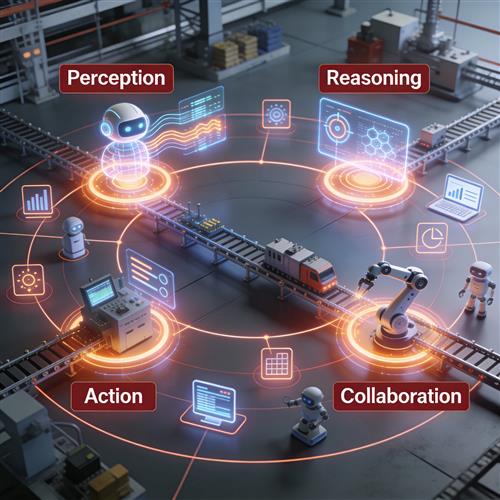


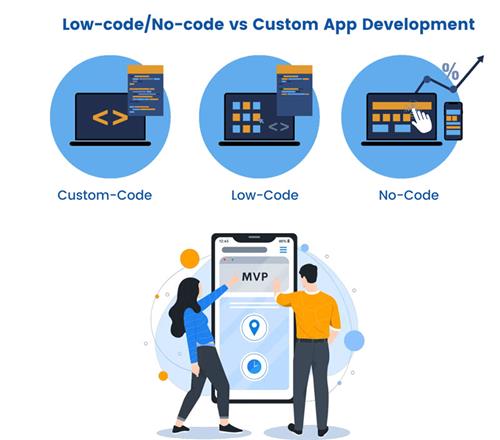
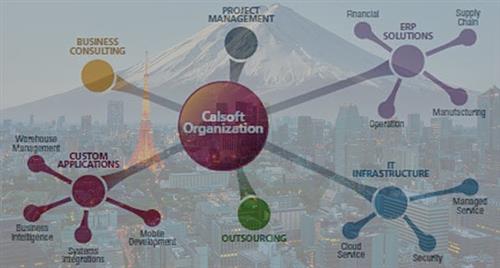









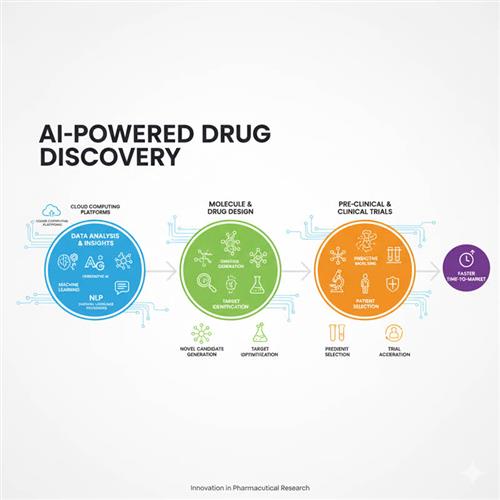
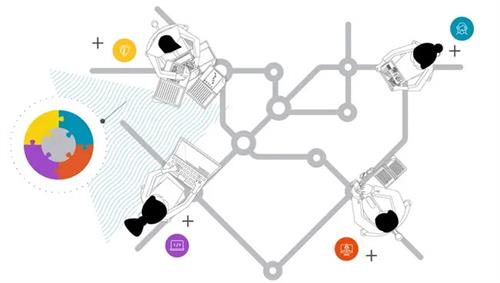

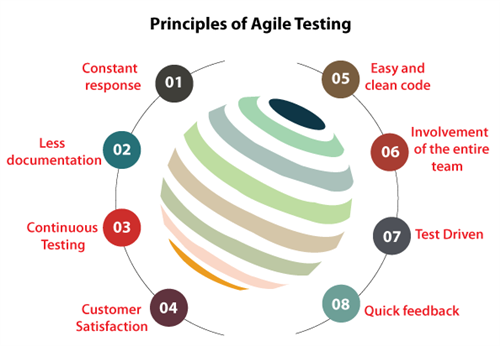
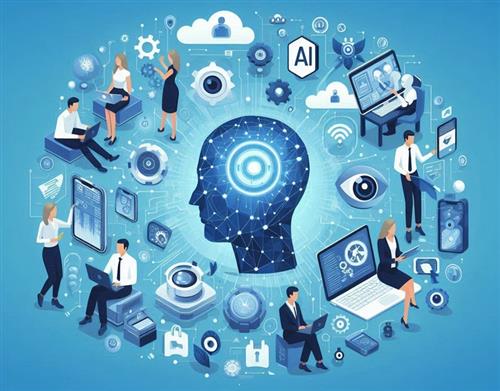


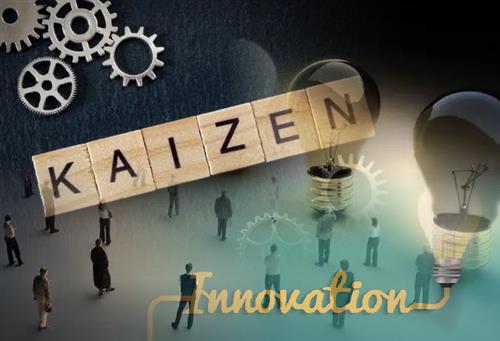










 Link copied!
Link copied!
 Recently Updated News
Recently Updated News